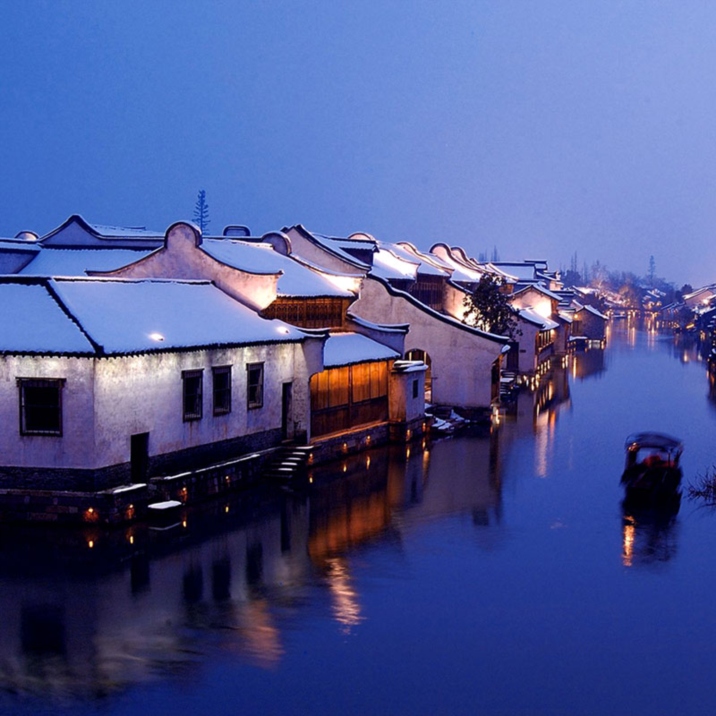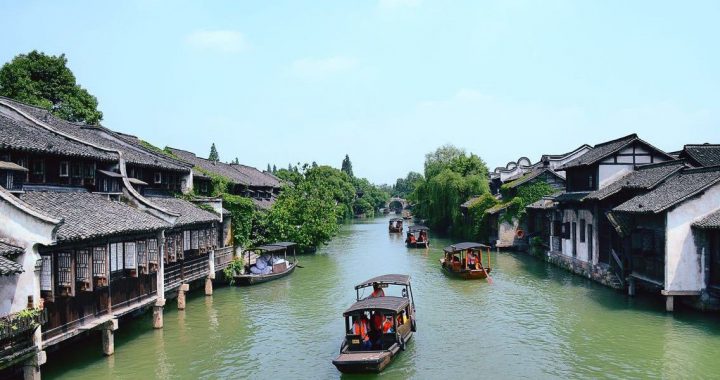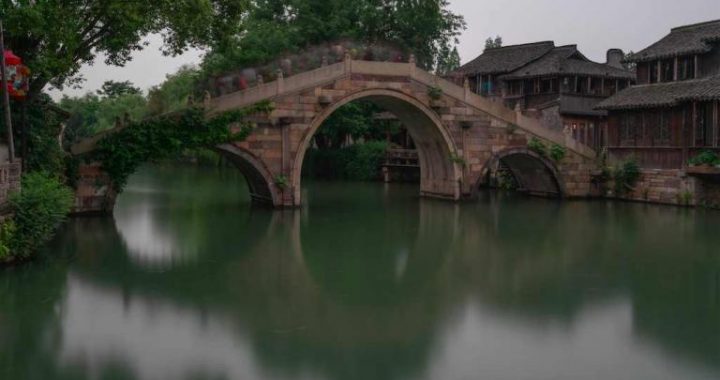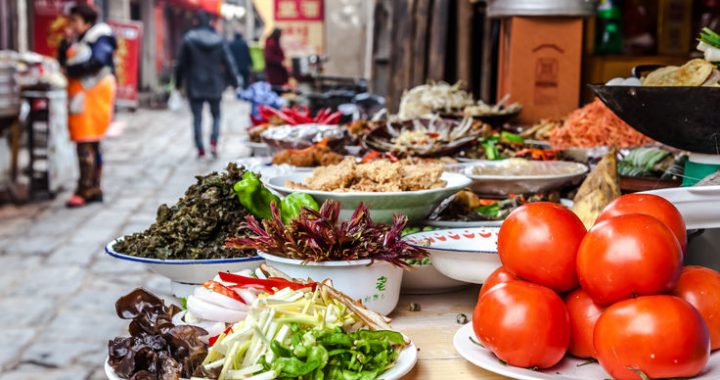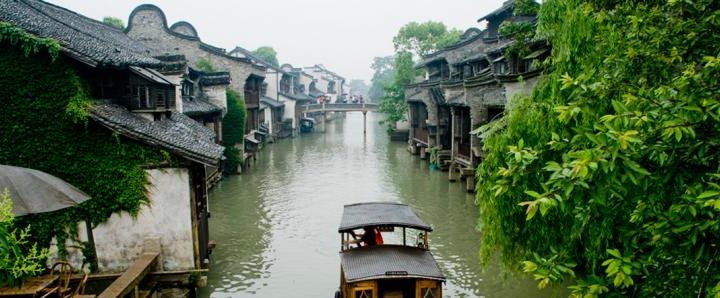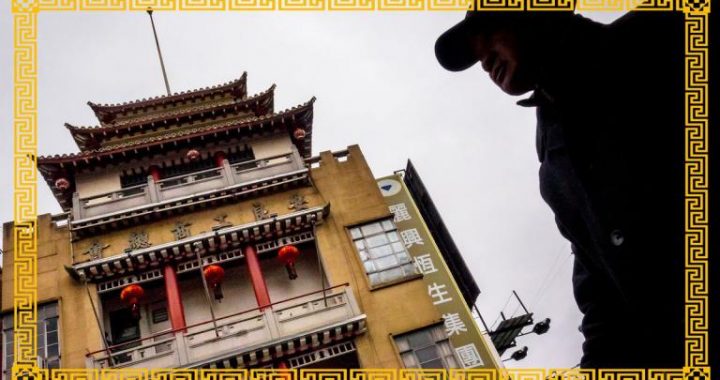The Gardens of Wuzhen Paradise on Earth
20 min readMardens thrived in ancient China as they did in ancient Rome. Surprisingly Ifor such an ephemeral pastime as gardening, their names and style live on, some from two thousand years ago. European gardens were generally named after their owners or the houses they glorified such as the ‘ Villa Adriana Gardens’ in Tivoli, the ‘ House of Vetti’ in Pompeii or the ‘ Horti Agrippinae’in Rome. The Chinese, in contrast, created gardens with delicious names, such as the ‘ Garden of Multiple Springtimes’,’ of Solitary Joy’ or ‘ Master ofthe Nets Garden’. The Chinese even had three distinct characters for gardens.
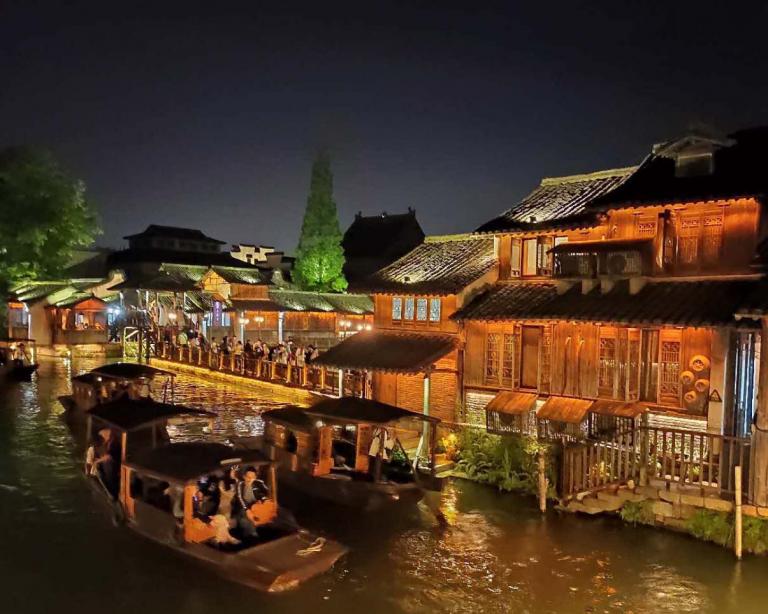
You was a garden focused on birds and animals, Pu one of plants and the third, Yuan, embraced all styles. English gardens used more prosaic names suchas Kitchen Garden, Knot or Herb Gardens and perhaps a Pleasure Garden.
Chinese gardening evolved into three distinct styles: contemplative, landscaped and enclosed, the later focused on ponds rocks, trees and flowers within small domestic courtyards. These were the most commonly found in Wuzhen. Gardening as a pastime which seeks to mould nature into a form to humour human sensibilities was recorded in China from the Shang dynastyaround 1000 BC. Large areas of parkland were enclosed for hunting by the imperial court in just the manner which the eleventh-century Norman Kings took land from the Anglo-Saxon natives to enclose the New Forest in southern England. The Normans merely hunted. Under Han rulers, zoology and hunting were more actively combined.
If there was not quite a Chinese Academy of Garden Design during the Han dynasty, garden creation was a recognised skill. Courtiers such as Zhang Lian-much later in the mid-1600s and so a contemporary of the French garden genius Le Notre of Versailles-were known in their time as’ Landscape Artists’. During the Qing dynasty it was members of the Imperial Instituteof Paintings who were commissioned to design garden projects. The story of Chinese dynasties includes many references to ancient imperial gardens withtheir charming, fanciful names. Europe generally waited longer for its famous gardens and awarded them less aspirational titles. They were simply known after the Roman place name fashion as ‘ Hampton Palace Gardens’, or ‘ VersaillesPalace Gardens. In China even modest gardens in Wuzhen enjoyed evocative names.
The Tang dynasty is regarded as the golden era of Chinese classical gardening. The art of grafting and rootstock transplantation was understood and recorded, so too the domestication of distantly sourced plants was achieved and the use of cold frames pioneered. The veracity of the enjoyable witticism that the two most impoverished sciences in China were zoology and botany is challenged by this long established love of gardens in China. Some would have it, particularly in southern China, that botany and zoology were the least developed sciences in China as’ if it moved or grew’ the local people would eatit before the botanist or zoologist had a chance to conduct an examination. For botanists at least it seems there were plenty of plants to study.
The Chinese imperial families created vast gardens with wide lakes and huge artificial hills. Like the Romans they were built both to impress and for pleasure. Theirs was an idealised miniature and controlled landscape, in much the same way as the Reverend Gilpin advocated the ‘ Picturesque’ style of English gardening in the late eighteenth century. His mantra of striving for the “kind of beauty which is agreeable in a picture’ could have been applied to the imperial gardens. Gilpin would have surely enthused about the Chinese garden when he used the framed mirror to look backwards over his shoulder at nature, in the wild or at a cultivated garden for inspiration. Indeed the eighteenth century philosopher, Georg Hegel, possibly inspired by Voltaire and the Jesuit Misionaries, described Chinese gardens as paintings. There is no better model of this style than the enormous Summer Palace Gardens in Beijing. Mirrors and reflections also played a part in Chinese gardens and Wuzhen. Its round-arched bridges were designed to reflect the shadow of the moon above their’ Middle Kingdom’. Water was used in gardens to create similar reflections to those thrown out by bridges. Again French garden designers like Le Notre, notably in his gardens at Vaux Le Vicomte near Fontainebleau, exploited similar themes. This use of water is reflected in the poetry of the Song dynasty poet and philosopher, Zhu Xi, in the 1100s.
A small square pond, an uncovered mirror where sunlight and clouds linger and leave I asked bow it stays so clear It said spring water keeps flowing in.
During the Tang dynasty a civil servant and poet-painter named Wang Wei purchased a ruined villa and created the Jante Valley Garden. This was a beautiful garden of twenty small separate scenes in which music was played on instruments like the cithara while poetry was recited. Wang’s chosen garden names were typically inspiring as there was a Garden of Magnolias, of the Waving Willows, Summer House in the Heart of Bamboos and the Spring of the Golden Powder. The small separate garden scenes are suggestive of the twentieth-century English garden designer, Gertrude Jekyll. She too emphasised separate rooms within a garden. The principles of horticulture in East and West so far apart. Links between East and West continue through Chinas are no adoption of Linnaean plant nomenclature; many ‘ European’ plants, from Wisteria to Sophora, are glorified with the suffix sinensis. Many of these plants reached Europe in the late 1800s. The Western gardener should be grateful for the contributions of both Chinese horticulturalists and European missionaries who did more than just pray when on their knees. The outstanding missionary-botanist was the Frenchman Father David, who died 1900. Botanic gardens throughout Europe are full of Linnaean nomenclature plant references to sinensis and davidia.
An imperial interest in gardens occurs frequently in China’s history.
In contrast, other than one of the Stuart kings in late-seventeenth-century England, it is difficult to think of any English monarch who showed interest in gardening. However, in China for example, Emperor Huizong, the Song emperor of the early 1100s, blended together a Scholar’s Garden with an imperial ‘ Statement Garden’ in his capital city, Kaifeng. He supervised directly its building with rocks, exotic plants and tamed streams. Huizong was such a passionate admirer of gardens that the pursuit became another branch of thearts. He had an extensive rock garden created outside Kaifeng, where he hoped the immortals would listen to his pleas for more sons.A gifted artist, though an incompetent ruler, he was captured by the Jurchen invaders. As a captive he endured witnessing his gardens’ destruction,a reminder of the ephemeral nature of all gardeners’ endeavours, be it through wanton destruction or nature itself. It was one of Huizong’s sons, Gaozong, who became the first emperor in Hangzhou during the Southern Song. He must have brought with him to the south a vivid memory of his father’s gardening achievements.
Imperial gardens were of two types, Sancbi Yuan or Shanting Yuan. Sanchi were inspired by the Eight Immortals, one of the most popular myths in Taoism. It required large artificial mounds and ponds. Shanting Yuan focusedon smaller hills with viewing pavilions and separate areas. Both sought to improve on nature in much the same way as did the English designer Capability Brown in the late 1700s. Brown was once invited by King’s College, Cambridge University, to ‘ improve’a section of the university’s grounds known as The Backs. The contract never actually came to fruition but his perpetual interference with nature irritated one contemporary who was tired of his socalled improvements. He announced his wish to die before Brown, so that he could be certain of reaching Heaven before Brown began any improvements to the celestial gardens. His principles of garden and landscape design would have fitted the gardening taste well during most periods of imperial China.
It was when the Song imperial court under Gaozong moved to Lin’ an, modern-day Hangzhou, that this part of China, which includes Wuzhen, acquired its reputation as the gardening paradise of China. The word paradise’reflects a Christian reference to the perfect place where there is timeless harmony. The etymology of the word, sourced in Persia, derives directly from the phrase ‘a perfect walled garden’. Within China’s religions there is no direct parallel to a celestial garden. However, China’s immortals, who influenced humans’ lives so much, did gather on mountains. The construction of miniature mountains within Chinese gardens does perhaps show the links within the cultures of East and West between gardens and the supernatural.
The thought of paradise reminds a Chinese of Mount Penglai, an island unspoilt by man. This mythical place might be found on the southern coast of Shandong province beneath Beijing and facing towards the Korean Peninsula.
This island in the Bohai Sea was the home of the Eight Immortals, of which nearby cities such as Yantai in Shandong now display huge replications. In thisarea of natural beauty, which Chinese gardeners tried to copy, there was neither pain nor winter. Wine flowed freely, there was no shortage of rice, and fruit could grant immortality.
Hangzhou, when it was the Song capital, had fifty gardens and smaller Suzhou almost as many. Such a concentration of horticultural excellence forms another link to Cambridge. The thirty-one colleges of the university each nurture wonderful gardens, many of them side by side on land which leads down to willow trees lining the twisting River Cam. There is probably a greater concentration of gardens, and more gardeners employed, in this one area than anywhere else in Europe and perhaps even than in China, square metre for square metre. It offers a horticultural cornucopia to match ancient Hangzhou.
The rich of Wuzhen would also have embraced the fashion of gardens. It was the third type of garden the Wenren Yuan, or Scholar’s Garden, that the richer merchants or scholars of Wuzhen cultivated. Their gardens, and indeed most of those of Zhejiang, fall into a different category to those of the emperors seeking encounters with the immortals. Theirs are intimate gardens created by scholars, former government officials in retirement, successful soldiers or rich merchants. They too offer an idealised, if in miniature, expression of harmony between man and nature,a miniaturised landscape of water, hills, mountains, pathways, bridges and plants. Naturally their owners wished their gardens to impress visitors but they were also to be a source of inspiration for themselves when painting or writing novels and poems. The material and spiritual lives of scholars and literati became inseparable from gardens. Most of these private gardens occupied only a small space. Creating the variety of scene which was expected within a small territory demanded particular skill.
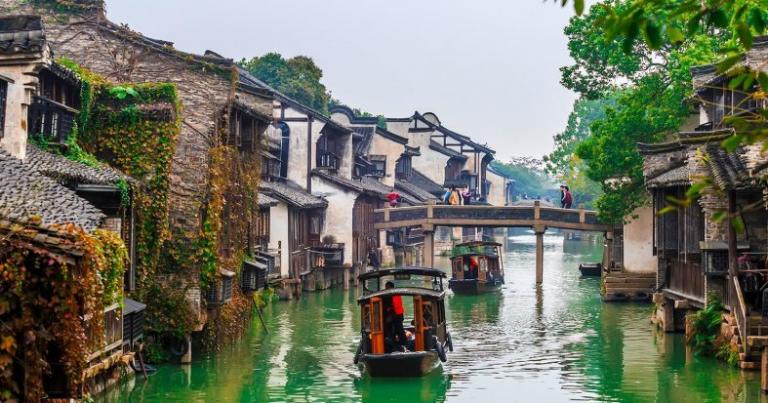
These were the gardens which the Ba, Gui and Zhu families created in Wuzhen. The Gui family home was built in the early twentieth century; it was reborn as a Museum of Foot-binding in the twenty-first century and retains its original internal courtyards. In one of them a mimosa tree flourishes; ironically in this land of silk and mulberry trees the Western common name of this plant is the Persian silk tree. This is because its yellow flowers are exquisitely silky to
the touch; it has no ability to sustain the silkworm. The courtyard, when owned by the Gui, would have been a peaceful haven, bringing cool air into their home and been a nursery for pots of roses, camellias and chrysanthemums. The Ba and Zhu gardens are older.
The reference to the Heavens above, with Suzhou and Hangzhou below derives in part through gardens and particularly through those of Suzhou. Thesegardens remain a major attraction to twenty-frst-century visitors. They offer a tangible sense of tranquility and peace, although during national holidays the volume of people can destroy much of the stillness. Gardening everywhere is about establishing a mood. Large numbers of visitors make the connection with the intentions of the garden designer difficult.
The oldest garden at Suzhou,'”The Blue Wave Pavilion’, dates back to the 1000s and the poet Su Shunqing.A hundred years later followed the ‘ Master of the Nets Garden’, next door to another called the ‘ Fisherman’s Retreat’. It had pavilions with names like”The House of Thirty-Six Mandarin Ducks. These names were allusions to the simple life of a fisherman, envied perhaps by rich men of power whose moral compass might have been lost through a lifetime’s search for wealth and prestige. During the many years since their conception there were inevitably cycles of destruction and restoration, but it would seem Suzhou has retained the spirit of these gardens. The names of their gardens-one in Shaoxing to the south of Wuzhen is called the ‘ Goose Playing Pond’.
Others at Suzhou are named the Humble Administrator’s Garden, the ‘ Lingering Garden’, the ‘ Couple’s Retreat’, the Lion Grove, or the ‘ Retreat and Reflection Gardens’. These are wonderful names for gardens and, once heard, the visitor’s mind is flooded with an expectation equal to that which the aroma of food plays on the gourmet’s taste buds. They also reflect the great importance the Chinese attach to names, be they of gardens, children or their Gods. Disappointedly in the West Christianity flattened variety in personal names and gardens seldom have any name beyond that of the home to which they are attached.
Since Suzhou is full of the gardens of rich retired officials, it is not surprising that neighbouring towns like Wuxi,a hundred kilometres from Wuzhen, also acquired a gardening reputation. Wuxi had even adopted as its slogan Warmth and Water’, blessings to any gardener.A Song historian wrote of thirty-four gardens in Wuxi; its most famous was tamely called the’ Garden of the South’ but it incorporated an’ Island of Immortality’, Penglai Dao. The quest for immortality has ever been a Chinese obsession.
Warmth, water and a reputation for beauty were a heady mix. This is why gardens developed around and within Wuzhen. The challenges of gardening were somewhat less than those faced, for example, by those on the coastline of Scotland. Salt-laden Scottish winds driven from the sea, excessive rain and shallow soil depth were never issues faced by the Wuzhen gardener. Gardening, be it the nurturing of mulberry bushes on the causeways separating rice paddies or within a town garden, was a comparatively simple pastime in this area of China.
In Wuzhen retiring civil service officials seeking a retirement occupation naturally turned to poetry and gardening. Their gardens were enclosed by high walls which stretched right to the property’s boundary. These walls of the traditional private Sibeyuan-style court provided security and privacy. Such enclosures also created a benign warmer climate without wind or driven rain, as if the garden were placed in a more southern climate. The same is true of the enclosed college places at Cambridge University. Clare College garden can nurture bananas and Pembroke College the Chusan palm tree, which do not normally flourish in England. So too in Wuzhen did the artificially created court yard spaces assist gardening.
The small spaces dedicated to gardens were generally courtyards with water and perhaps a few of the Taihu white polished stones from Lake Tai in neighbouring Jiangsu province. The lake was linked to Wuzhen by the Grand Canal, so transporting these stones would have been simple. The courtyards acted as open-air living rooms, for which there was some requirement given the summer temperature could exceed 30 ℃. The space would have been used to play chess or music, drink tea or recite poetry. Its layout might have been guided by the Craftsmanship of Gardening, written by Ji Cheng in the early 1600s, roughly at the same period as the oldest English work on gardens, The Profitable Arte of Gardening, by Thomas Hill.
Although the most famous gardens in the Wuzhen area are to be found in Shaoxing, Wuxi, Suzhou or around Hangzhou’s West Lake, Wuzhen possessed some smaller cultivated areas. These are typical of the smaller Chinese garden owned by the moderately wealthy. Substantial gardens were the preserve of aristocrats, rich retired courtiers, or businessmen and members of the literati who were also wealthy. Gardening for most Wuzhen inhabitants would have been little more than part of their life of subsistence, nurturing vegetables on a small plot of land.
The vegetation between north and south China is clearly different. In the deep south around Guangdong province, latitude of 23 degrees, the vegetation is dominated by evergreen plants and trees. In the three most northern provinces of the Dongbei area deciduous trees dominate. Wuzhen is in southern China but its trees are a mix of northern and southern species. In its alleyways the maidenhair tree, the Ginkgo biloba, thrives and sheds its beautifully shaped yellow-stained leaves in autumn. There are also of course plenty of mulberry trees whose leaves sustain the silk industry, but their practical purpose was so serious in these parts that they were rarely used as ornamental trees as they are in the West. There are beech, varieties of evergreen cypresses, pine and laurels.
Bamboo is also ubiquitous.
It was primarily bamboo and palm trees that Mao Dun used to fill his small courtyard at his Wuzhen residence. The room which once served as the great writer’s study opened onto the street but behind was a small courtyard typical of the private garden in this part of China. Here it might have been that a Wuzhen townsman planted a tree when a baby girl was born; wood from the tree would be turned into the wedding box when she married.
A classical garden in Wuzhen can be found at the Lizhi Academy, in Guanqian Street. It was originally built by a retiring government official, Yan Chen, during the late nineteenth century. The pinyin word Lizhi implies aspiration and its characters read Ambitious Goals’. Li can be realised by those with the will, Zhi. China was ever a culture to embrace written exhortations.
A successful First Degree Scholar in the Imperial Examination contest, he had been the Governor of Police in Beijing and Hangzhou. Evidently a decent man, he established the college to spread the pearls of learning amongst those less fortunate than himself. He was its headmaster for the last twenty years of his life and founded another school as well. In the garden he created artificial mountains from stones and diverted water into the garden. His garden was typical of the association between learning and gardening, as well as the desire of retired successful men to tune the remainder of their lives to nature. Much of this garden was destroyed during the Taiping uprising when rebels used the area to store provisions; Yan oversaw its partial rebuilding after the rebellion.
There is another Wuzhen garden at the Zhaoming Academy. It is a two-storey building approached on a path alongside the largest strips of grass to be seen in Wuzhen. They may not be substantial by the standard of English lawn-mowing obsessives but they must surely require machinery to keep them trim.
To enter the academy grounds the visitor passes through a three-metre high rectangular stone memorial archway from the reign of the Ming Wanli Emperor in the early 1600s. Mandarin characters carved in stone on the lintel read ‘ Relics of the Six Dynasties, the period in which the crown prince had lived. There are other inscriptions to the Ming poet Zhu Zhishan and Shu Wei from the Qing.
During the ‘ Cultural Revolution’, the characters were hidden behind plaster in order not to provoke the destructive urges of the young Communist zealots.
The building itself, naturally, faces south. Past the arch there are four pools in the front garden whose plants include the Pomelo fruit, Maidenhair and Osmanthus trees. The water is crossed by a raised stone pathway. The garden is formal, mainly of stone and water and without the personal touches that a scholar designing for his private interest might have created.
The focus on water, and thus wisdom, is doubtless an appropriate approach perhaps for an academy where the association between water and scholarship is respected. Most Chinese universities have large lakes at the centre of their landscaping which, according to Taoist thought, will engender intelligence and wisdom. The focus on water is certainly typically Chinese. The old Wuzhen academy’s present role is that of a small library combined with an exhibition area displaying the works of Chinese authors who have won the quadrennial Mao Dun Literature Prize. There is also an electronic reading room together with space where calligraphy and drawing lessons are given. Behind the academy there is more water and stone pathways with open-sided pavilions. Wuzhen is, after all,a water town.
The most charming of Wuzhen’s gardens surviving into the twenty-first century is known as the Lingshui Garden, or the Live Water Garden. It is in the Xizha area of the town and is large by the standards of Wuzhen. It covers 20,000 square metres. There are expanses of water separated by pathways. Some paths curl and wind past clumps of bamboo. The Lingshui pond plays host to ducks and sustains lotus plants. Bamboo sways in the breeze, hiding and then revealing the white stone from Lake Tai as well as the birds hiding on the inner most, more stationary shoots. Plenty of small birds, Blackcaps and Pickwicks, perchamongst the long leaved plumage of the bamboo. Birds in the largest Chinese metropolises have been culled through pollution. Birds flock to Wuzhen in greater numbers.
There are two plum trees as well. Plum trees blossom in the gentle Wuzhenwinter rather in the manner of some Viburnham, such as the Bodnantense, in the West. The plum tree is thought to confront winter, remind of the promise of spring, and so has long been a symbol of both endurance as well as regeneration, even inner strength. Chinese culture embraces four ‘ noble plants’ of which the plum is one. The others are the orchid which symbolises purity, the bamboo uprightness and the chrysanthemum for humility. As with the wonderful variety range of names across so many spheres, the symbolism attached to Chinese flora is most appealing. There was a language of flowers in the West as well; they could symbolise chastity, love or death, and tulip bulbs in early seventeenth century Holland even caused a deranged speculative boom. In the nineteenth century books written in English on their meanings were published but knowledge of their symbolism has never been as broadly known in Europe as in China.
Standing tall above the plum trees and bamboo is the Pomelo fruit tree; its branches stagger and sag beneath the weight of their outsided citrus fruit.
Its branches are less dense than bamboo so it is only the braver or bigger birds which display themselves clearly on this tree. Labels describe another tree as Bischofia Polycarpa, helpfully as this native tree of southern China is not well known in the West, although botanists group it within the same family as the English Christmas plant, the Poinsettia. To the untrained eye there is not much to connect the two plants. The garden contains a memorial tablet to Kong Lingiing,a writer born in Shanghai in 1904 and who was related by marriage to Wuzhen’s best-known writer Mao Dun; other tablets dedicated to the writers Wang Huiwu and Shen Zemin are in this garden. The main building itself is given over to celebrate the life and work of Mao Dun, who died in 1981, after alifetime dedicated to the Communist Party. These four writers were each strong Communist Party supporters; Mao Dun was also Minister of Culture under Mao Zedong.There remains the slight feeling that amongst the beauty of the garden the visitor is supposed to note the bond between creative literature and Communism.There are also carvings of a dragon in the garden as this fearsome creature found in mountains and near rivers is associated with a dynamic spirit.
Of course Mao Dun should therefore be considered a dragon amongst writers.
The Lingshui Garden catches many of the principles of Chinese garden design.It is a place of tranquility which represents idealised nature.It has expanses of water which attract the eye,then the visitor’s gaze is caught by the trees and perhaps the birds.The miniature stone mountains,suitably polished and white and probably from Lake Tai,are seen as a corner is passed.There are fish,mostly carp of colours varying from pure white to deep gold,in the ponds.Like trout,the carp is a river-bottom feeder and bony.It is often kept in nets within nearby ponds so restaurants can serve their guests with fresh fish;the grass carp served with a vinegar sweet and sour sauce is a Wuzhen specialty.
The carp figures frequently in Chinese paintings and indeed in mythology.
Its ability,shared with salmon,to jump upstream and over the dragon gate’鲤跃龙门is used to describe both a sudden rise in social status and also to exhort a young man to success in examinations.The safe territory of these fish in the Lingshui Garden well deserves the phrase a‘Fish’s Paradise’,Yu Le Guo.
The temples also each have areas of space on all sides where plants have been sown.The Silkworm Goddess Temple hosts various artistic events during the April Qingming Festival,the Sweeping of Graves Day.The event is triggered by the cocoon of the silk worm being symbolically peeled away.The origin of the fair was based on attracting the farmers to buy the latest silk-raising tools and handicrafts just as the first and best silk harvest was about to begin.The trees thriving there,as well as at the General Wu and Xiuzhen Temples,are generally varieties of cypress together with Maidenhair and the Ghost Tree,which has the botanic nomenclature Sopbora sinensis.It is another tree that flourishes in England which was sent over from China. Whereas in England its capacious umbrella-like shape has earnt it the name of the Scholar Tree, in China the prefix of ghosts requires it to be planted someway from private homes in order that the ghosts dancing round the tree at night do not seek refreshment inside. The spiritual strength of this place of religion in Wuzhen must intimidate the typical Chinese ghosts celebrating beneath the tree.
The imagery of Chinas Mount Penglai, or of the Christian Paradise, lies at the core of Chinese culture. The design of a garden strove to recreate such mythical concepts on earth. This was the case from the vast imperial gardens through the more modest gardens of Suzhou and to those even still smaller gardens of Wuzhen. Each was, immodestly or modestly, trying to capture a piece of paradise. Creating a lake, or even a pond, and a small rockery representedthe pursuit of virtue, kindness and wisdom. These were the objectives of any merchant with sufficient money, or of the recently retired imperial official, returning to Wuzhen. For these privileged people designing gardens was immensely important. Confucius recommended that the wise take ‘ pleasure from water and virtue from hills. Wisdom was as deep and as comprehensive as water; mountains were solid and immoveable.
In horticultural terms Wuzhen may be overshadowed by the reputations of Suzhou or Hangzhou but the gardens it has, from the Lingshui to the more modest courtyard spaces of an ordinary family, present something crucial about Chinese past culture. So many Chinese now live in sky-high tower blocks with but rare opportunities to observe plum fruit maturing and nothing beyond a small veranda on which to nurse a few plants. The connection to nature which Wuzhen brings is something else to be valued during a visit to the town.
With warmth, water in abundance and rich dark soil it would be an aberration if Wuzhen could not host some fine gardens. In 822, during the Tang dynasty, Bai Juyi was governor first of Suzhou and then Hangzhou. Typically of the educated successful civil servant, he was also a poet and gardener.
Gardens stimulate all five senses of hearing, sight, touch, smell and taste. They inspire poets too. He must surely have visited nearby Wuzhen as an official and perhaps enjoyed the gardens of the richest citizens. His poetry is amongst the most accessible to English readers; it was brilliantly translated by Arthur Waley, who studied at King’s College, Cambridge in the early 1900s. Loved, nurtured, neglected or restored, gardens of all conditions have been as much an absorbing pastime in China as England. Both societies have nurtured peoplewith landscaping and horticultural skills. Somewhere near Wuzhen Bai found a forsaken garden, perhaps abandoned in the wake of the An Lushan rebellion, which was suppressed just a few years before his birth. Gardens, he suggests in the poem, must sometimes wait for the return of their human lover. Such care has now returned to the gardens of Wuzhen.
